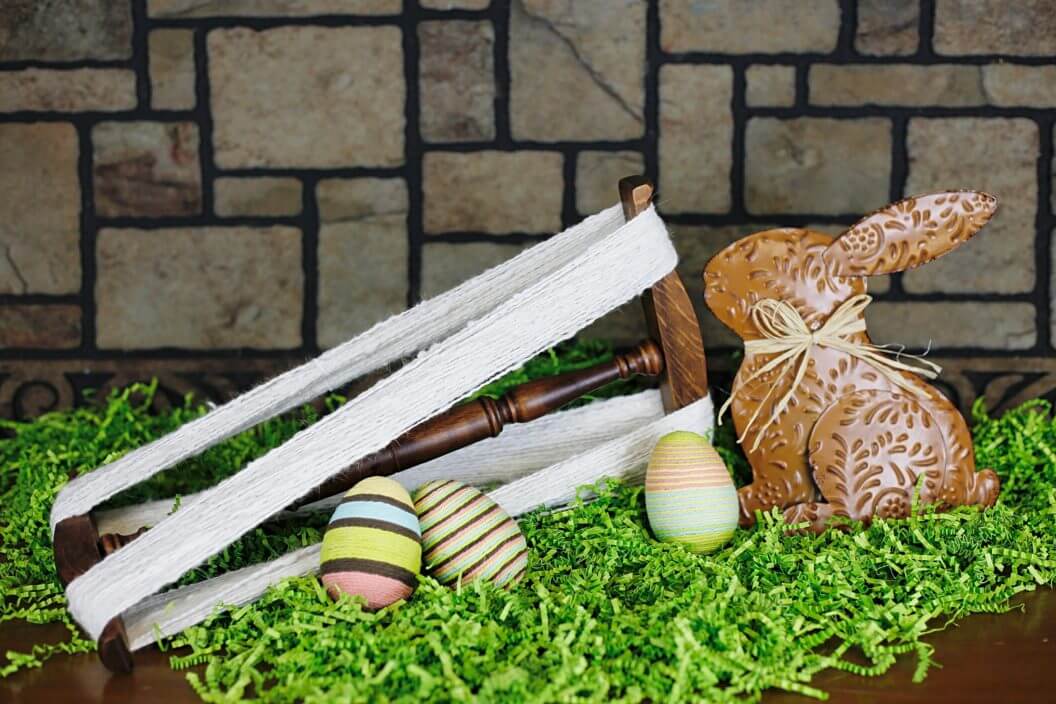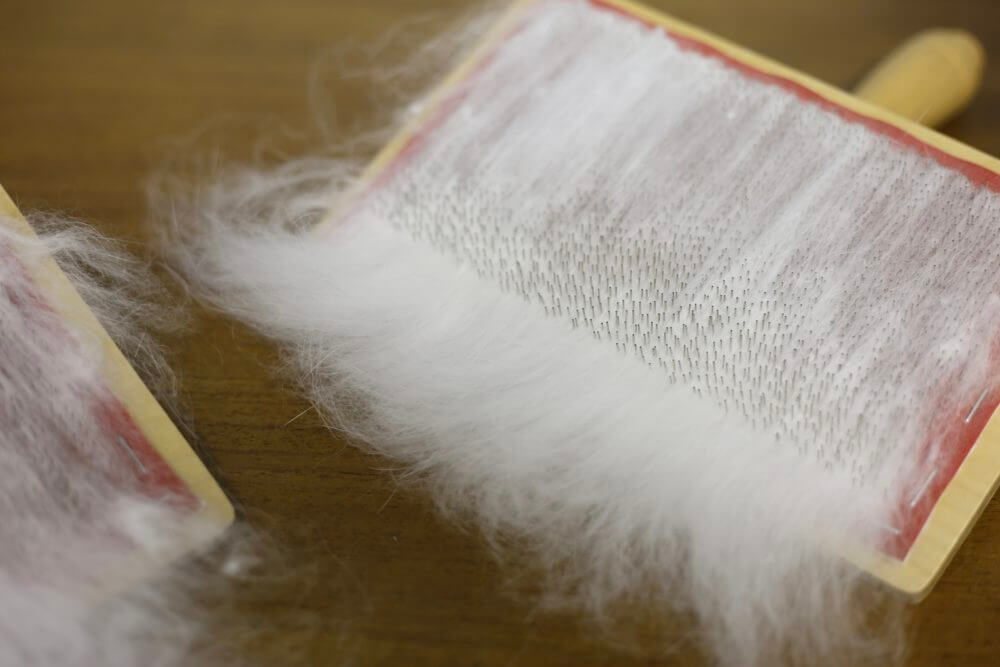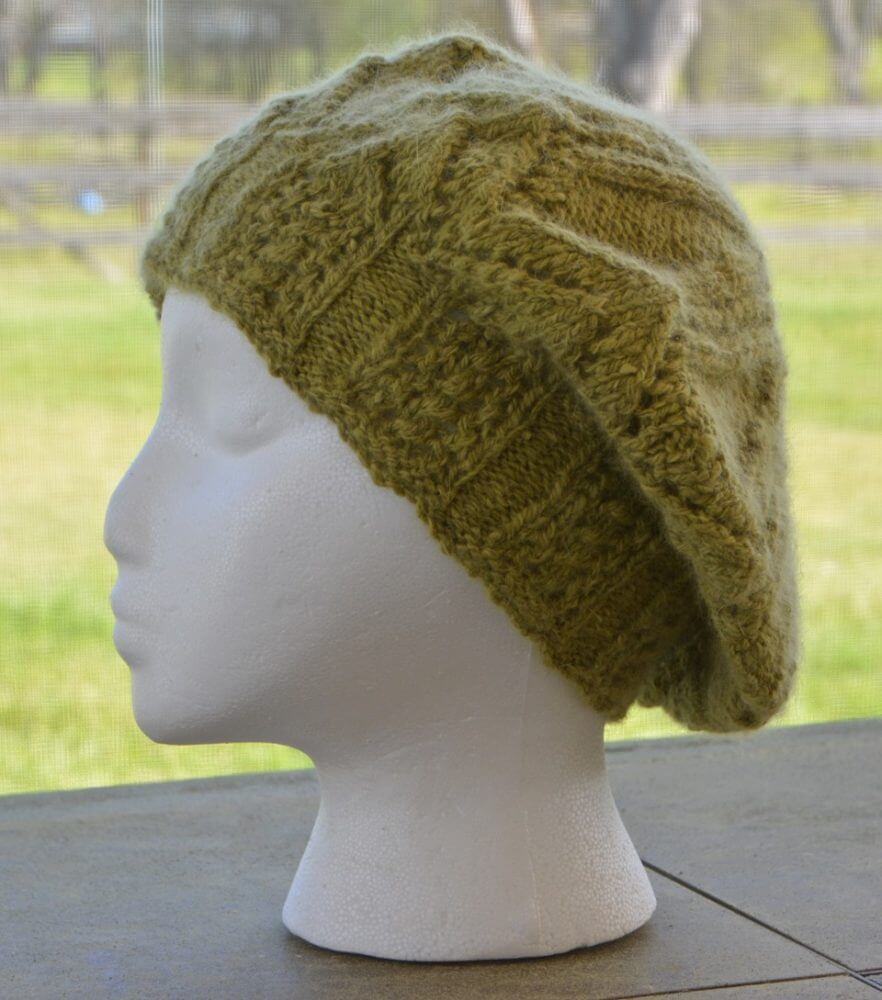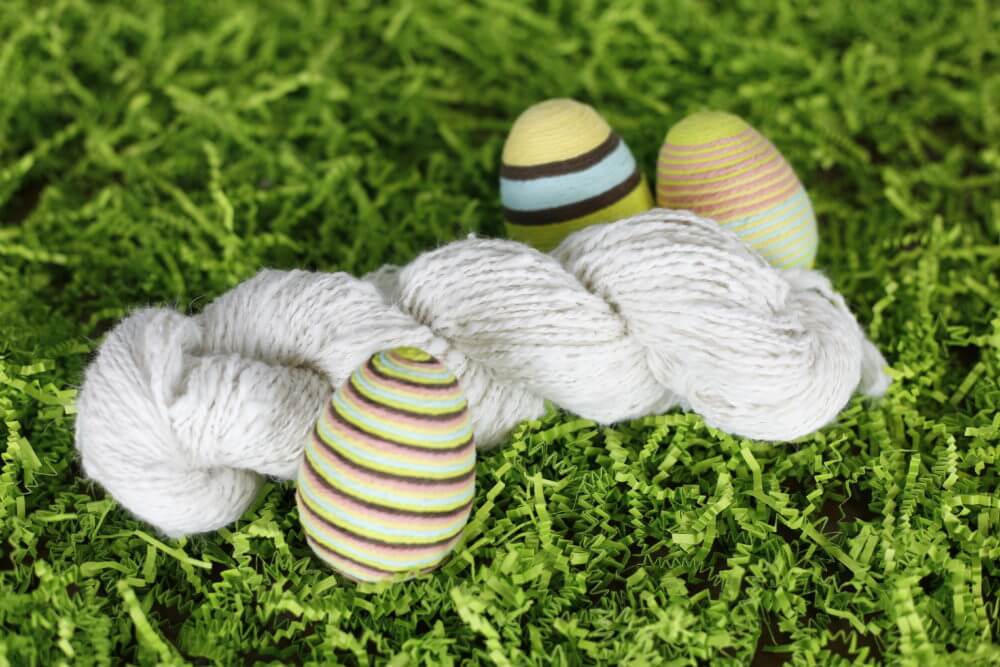With Easter right around the corner, it seems there are Bunnies everywhere!
Have you ever tried to spin the luxurious cloud of fluff that grows on an Angora Rabbit?
If you have ever had the pleasure of holding an Angora Rabbit, then you know just how irresistibly soft and fluffy their fiber is. These rabbits produce mounds of incredibly soft wool that is much sought after in the fiber community.
There are several different breeds of Angora rabbits. The English Angora is “plucked”. This is done at at time when the rabbit is naturally shedding. This is NOT a painful or uncomfortable for the rabbit. It’s very much like a dog that sheds its coat at a certain time of year. It’s not uncommon to see a bunny sitting calmly in his owners lap while the yarn is spun directly from the animal. The French and German Angoras are shorn, not plucked because they don’t shed all at once like the English tends to do.
But what should you expect when spinning Angora wool?
Let’s start with the basics. A nice Angora fiber will have a micron count of 12 – 16. To compare, Kromski Polish Merino wool has a count of approximately 27. Alpaca is generally around 18 – 25 microns. The smaller the micron, the finer the fiber. Clearly the Angora is the finest of these. The normal staple length can vary from 2.5″ – 5″, depending on the age of the animal and length of time between shearing or plucking.
Angora lacks the scales that are present on wool. The smooth sides on Angora prevent the fibers from holding onto each other when spun, unlike sheep wool where each strand of fiber grabs the next, making the task of spinning much easier. The lack of scales contributes to the soft feel, but when combined with the fine micron count, it makes this a very slippery, fly away fiber.
But how does that affect the spinning process?
Simply put, it makes spinning more difficult. If you are a beginner spinner, it’s recommended that you begin with some Polish Merino or another breed of sheep wool. However, if you are ready to venture into bunny yarn, there a couple of things to keep in mind. The most important (other than don’t attempt to spin this fiber outside on a breezy day!) is to use your Kromski regular small whorl, or whatever smaller whorl is available to your particular wheel. You’ll want to give the yarn a fair amount of twist or it will not hold together.
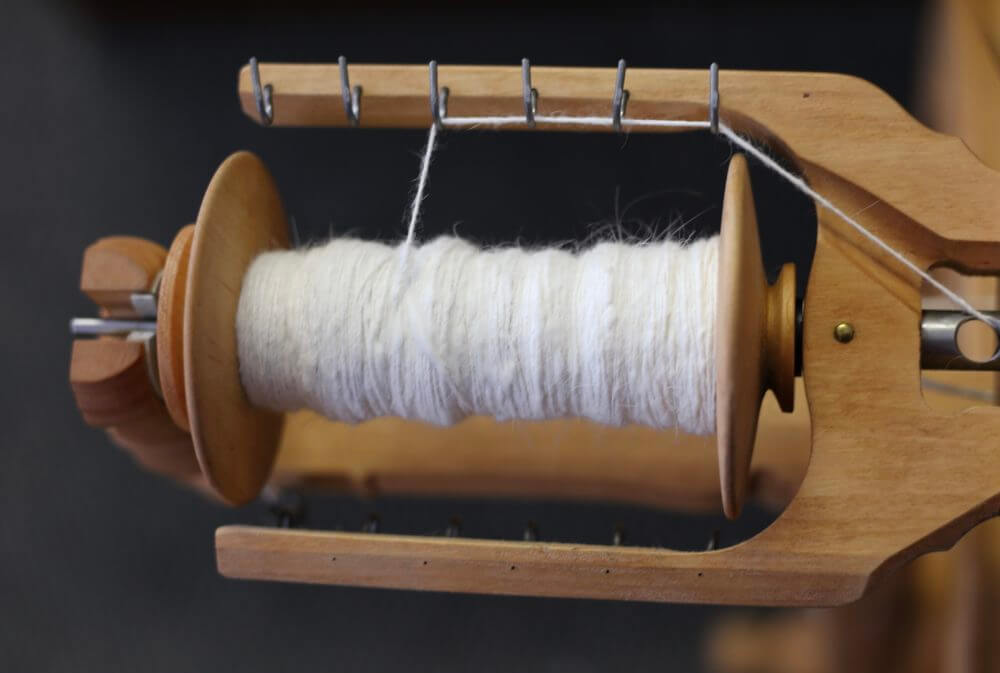 Unless you have purchased commercially processed roving or meticulously plucked, high quality fiber, there will likely be a number of tiny matts and tangles in the fleece. One good option to reduce the number of snags is to use a fine hand carder such as the Kromski 108 point. It is still unlikely that this will produce a completely smooth, even yarn. This is simply due to the characteristics of the fiber itself. The slippery nature causes groups of fiber strands to rush through the spinners fingertips, creating lumps of thick patches in the yarn. But don’t let that discourage you! Some lumps and bumps add character to the yarn and interest to the final project!
Unless you have purchased commercially processed roving or meticulously plucked, high quality fiber, there will likely be a number of tiny matts and tangles in the fleece. One good option to reduce the number of snags is to use a fine hand carder such as the Kromski 108 point. It is still unlikely that this will produce a completely smooth, even yarn. This is simply due to the characteristics of the fiber itself. The slippery nature causes groups of fiber strands to rush through the spinners fingertips, creating lumps of thick patches in the yarn. But don’t let that discourage you! Some lumps and bumps add character to the yarn and interest to the final project!
But if that’s not what you are looking for, then consider blending the Angora with a bit of wool. This not only makes the fiber easier to manage, but it also expands the range of use for the yarn. Angora is a hollow core fiber and as such, is extremely warm. A sweater made from 100% Angora would be too much to bare in all but the coldest climates. The yarn is also without memory. This means that over time, the finished product will stretch out of shape and no amount of reshaping will bring it back. Therefore adding 20 – 25% wool (or other fiber) will not only help the costly Angora go farther, but may in fact produce a better quality product. Do not, however, be tempted to use a low quality wool. The Angora will enhance the wool, but you certainly don’t want the wool to take away from the softness of the rabbit.
Blending is a great way to know that the hat you plan to knit will still fit after multiple wearings. And as you can see from the photo above, there is still a good halo developed with a blend. This halo will continue to grow with use as well. This hat was dyed naturally with Goldenrod and then treated with iron to create the green color.
This hat is an example of Angora fiber that was dyed before spinning. Unfortunately, this is not a blend and the 100% Angora brim has stretched and now the hat is slightly loose fitting. The body of the hat is wool, which has held it’s shape nicely allowing the hat to still be warn even though it is loose. Had the brim been blended with a bit of wool, the hat would still be a perfect fit.
This gives you some basic information on spinning Angora fiber. If you are interested in raising Angora Rabbits, please do some research before jumping in. These animals require very regular grooming and care.
This year why not honor the Easter Bunny and spin some Angora!




